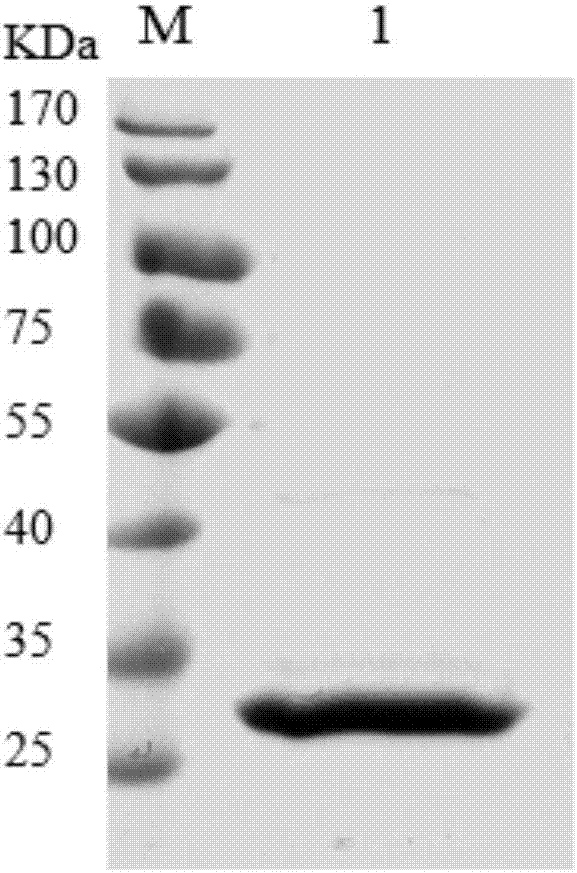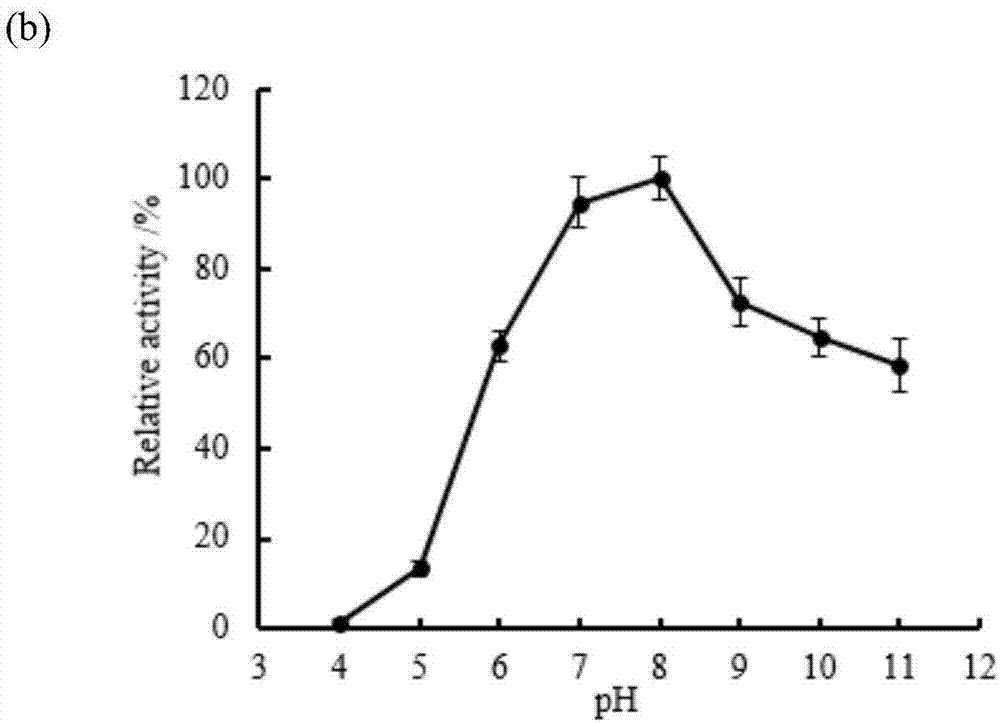Escherichia coli engineering bacteria for expressing pseudomonas putida creatininase and application thereof
A technology of Pseudomonas putida and Escherichia coli, applied in application, genetic engineering, enzymes, etc., can solve the problems of large demand for creatinine, difficulty in culturing wild bacteria, low specific enzyme activity, etc., and achieve temperature stability and pH stability. Good, easy to control induction conditions, fast and easy to cultivate
- Summary
- Abstract
- Description
- Claims
- Application Information
AI Technical Summary
Problems solved by technology
Method used
Image
Examples
Embodiment 1
[0031] Synthesis of Novel Creatinase Gene
[0032] Based on the genbank GI:34810367 gene sequence published on the National Center for Biotechnology Information (NCBI, http: / / www.ncbi.nlm.nih.gov / ), the sequence was optimized according to the codon preference of Escherichia coli , to obtain a new type of creatinase gene, its sequence is shown in SEQ ID NO.1, through biotechnology company (Shanghai Jierui Biological Engineering Co., Ltd.) whole gene synthesis, the synthetic gene clone in pGH plasmid (purchased from Jierui Bioengineering Co., Ltd. company) to get the plasmid pGH-cre.
Embodiment 2
[0034] Construction of the recombinant plasmid pET28a-cre containing the novel creatinase gene and the strain E.coliTop10 / pET28a-cre carrying the plasmid.
[0035] Plasmid pET-28a(+) has 6 codons encoding histidine behind the multiple cloning site region as a His tag, and a stop codon TGA behind the tag, and the stop codon was removed when designing the downstream primers. Design PCR primers according to the nucleotide sequence of the novel creatinase gene: forward primer cre-S: 5'-CGGCCATGGATGTCTAAGTCTGTT-3' (the underline is the NcoI restriction site) and reverse primer cre-A: 5'-ATACTCGAGAGTTGGTGGGAACTC- 3' (the underline is the XhoI restriction site, without stop codon).
[0036] PCR amplification was performed using the plasmid pGH-cre in Example 1 as a template, and cre-S and cre-A as primers. The gel-recovered and purified PCR product was double-digested with restriction endonucleases NcoI and XhoI, and ligated with the plasmid pET-28a(+) that had also been double-dige...
Embodiment 3
[0038] Construction of a Novel Creatinase-producing Strain Escherichia coliBL21 / pET28a-cre and Expression of Recombinant Creatinase
[0039]The recombinant plasmid pET28a-cre was transformed into competent cells of Escherichia coliBL21 (DE3) (purchased from Invitrogen Life Technologies Co., Ltd., USA), and positive transformants were screened on a kanamycin resistance plate. The transformants screened on the kanamycin resistance plate were used as templates, and cre-S and cre-A were used as primers for PCR identification, and the correct transformants identified by PCR were preliminarily identified as the new creatinase-producing strain Escherichia coliBL21 / pET28a-cre .
[0040] Pick 3 transformants identified correctly by PCR and inoculate them into BMGY medium, cultivate them at 37°C and 250rpm for 12h, then transfer the cultured bacterial solution to 100mL TB liquid medium (50μg / mL Kanamyces prime), 30°C, 250rpm and culture until OD600 is about 0.7-0.8. Add 1M IPTG to the...
PUM
 Login to View More
Login to View More Abstract
Description
Claims
Application Information
 Login to View More
Login to View More - R&D
- Intellectual Property
- Life Sciences
- Materials
- Tech Scout
- Unparalleled Data Quality
- Higher Quality Content
- 60% Fewer Hallucinations
Browse by: Latest US Patents, China's latest patents, Technical Efficacy Thesaurus, Application Domain, Technology Topic, Popular Technical Reports.
© 2025 PatSnap. All rights reserved.Legal|Privacy policy|Modern Slavery Act Transparency Statement|Sitemap|About US| Contact US: help@patsnap.com



